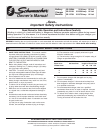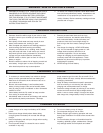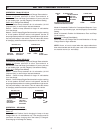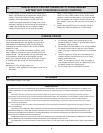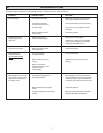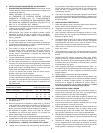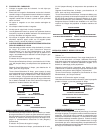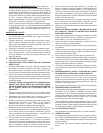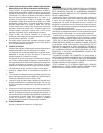
2
WARNING - RISK OF EXPLOSIVE GASES
1.
WORKING IN VICINITY OF A LEAD-ACID BATTERY IS
DANGEROUS. BATTERIES GENERATE EXPLOSIVE
GASES DURING NORMAL BATTERY OPERATION.
FOR THIS REASON, IT IS OF UTMOST IMPORTANCE
THAT EACH TIME BEFORE USING YOUR CHARGER,
YOU READ THIS MANUAL AND FOLLOW THE
INSTRUCTIONS EXACTLY.
2. To reduce risk of battery explosion, follow these instruc-
tions and those published by battery manufacturer and
manufacturer of any equipment you intend to use in
vicinity of battery. Review cautionary markings on these
products and on engine.
PREPARING TO CHARGE
D.
1. If necessary to remove battery from vehicle to charge,
always remove grounded terminal from battery first.
Make sure all accessories in the vehicle are off, so as
not to cause an arc.
2. Be sure area around battery is well ventilated while
battery is being charged. Gas can be forcefully blown
away by using a piece of cardboard or other nonmetallic
material as a fan.
3. Clean battery terminals. Be careful to keep corrosion
from coming in contact with eyes.
4. Add distilled water in each cell until battery acid reaches
level specified by battery manufacturer. This helps
purge excessive gas from cells. Do not overfill. For a
battery without cell caps, carefully follow manufacturer's
recharging instructions.
5. Study all battery manufacturer's specific precautions
such as removing or not removing cell caps while
charging and recommended rates or charge.
6. Determine voltage of battery by referring to car owner's
manual and make sure that output voltage selector
switch is set as correct voltage. If charger has adjust-
able charge rate, charge battery initially at lowest rate.
CHARGER LOCATION
1. Locate charger as far away from battery as DC cables
permit.
2. Never place charger directly above battery being
charged; gases from battery will corrode and damage
charger.
3. Never allow battery acid to drip on charger when reading
gravity or filling battery.
4. Do not operate charger in a closed-in area or restrict
ventilation in any way.
5. Do not set a battery on top of charger.
6. Do not expose charger to rain or snow.
7. Battery chargers get hot during operation and must
have proper ventilation. Air needs to flow around entire
charger.
8. Do not set battery charger on flammable items like
carpeting, upholstery, paper, cardboard etc. Charger
may damage leather and melt plastic and rubber.
7. Remove personal metal items such as rings,
bracelets, necklaces, and watches when working
with a lead-acid battery. A lead-acid battery can
produce a short-circuit current high enough to
weld a ring or the like to metal, causing a severe
bum.
8. Use charger for charging a LEAD-ACID battery
only. It is not intended to supply power to a low-
voltage electrical system other than in an
automotive application. Do not use battery
charger for charging dry-cell batteries that are
commonly used with home appliances. These
batteries may burst and cause injury to persons
and damage to property.
9. NEVER charge a frozen battery.
1. Someone should be within range of your voice or close
enough to come to your aid when you work near a lead-
acid battery.
2. Have plenty of fresh water and soap nearby in case
battery acid contacts skin, clothing or eyes.
3. Wear complete eye protection and clothing protection.
Avoid touching eyes while working near battery.
4. If battery acid contacts skin or clothing, wash immedi-
ately with soap and water. If acid enters eye, immedi-
ately flood eye with running cold water for at least 10
minutes and get medical attention immediately.
5. NEVER smoke or allow a spark or flame in vicinity of
battery or engine.
6. Be extra cautious to reduce risk of dropping a metal tool
onto battery. It might spark or short-circuit battery or
other electrical part that may cause explosion.
PERSONAL PRECAUTIONS
B.
C.
E.



